Writing Quests from hairylarry's blog
Writing Quests
by Larry Heyl
A story is said to have a beginning, a middle, and an end. This is a simple and reliable guide for writers. Somewhere along the way, in the creative process, a light is switched on and the writer sees where the story is going. Once the end is discovered the middle falls into place. That is, the middle part is shaped by the end part providing the necessary bits that allow the story to end convincingly.
Sometimes a quest is well run and well played and produces a story with a beginning, a middle, and an end. But more often not. In fact producing such a story is not the purpose of the game. It is a possible side product but not the goal. I think the players immersion into the fantasy setting and their identification with their characters are far more important to enjoying the game than any derived story everyone becomes aware of after the fact.
I am not saying the story is unimportant. Without the story there is no fantasy world to become immersed in and no characters to identify with. It's just that the story is not like a written story with a beginning, middle, and end. Nor is it like a story written by an author.
That's why I avoid writing a story when writing a quest.
Instead I write the setup, seeds, and goals.
The setup defines the quest and lays out the goals for the party. It should be short. It should place the party geographically and introduce important NPCs. It can be read aloud at the beginning of the quest and can also be printed for the players to refer to. It is the beginning of the quest and is similar to the beginning of a story. Except shorter.
Within the setup I include seeds. These seeds indicate what might possibly or could probably happen. The literary parallel is foreshadowing. With foreshadowing the author indicates what might happen and then writes what does happen or perhaps inserts the foreshadowing knowing what will happen. The seeds are hidden in the setup to suggest to the characters what they might be able to do. Whether they follow up on the seeds or not is up to the players. If the players do follow up it's good to give the DM some options to choose from, possible seed resolutions. And it's good to have multiple options because nobody knows how the players will appproach the situation hinted at by the seeds.
The goals are what the quest is about: find the treasure, rescue the princess, kill the monsters. When the players are satisfied they have met the goals that signals the end of the quest. The goals can be mentioned explicitly in the setup or they also may be hidden in the narrative like a goal seed.
The setup, the goals, and the seeds are all text. The other part of writing the quest is preparing the assets. The assets are the pictures, the maps, the character sheets, the description of the treasure, the stat blocks for NPCs and monsters, etc. It is possible to run a quest without any assets but assets make the quest easier to run for the DM and assets make things flow smoothly for the players.
Once the quest writer has an idea writing the setup is quick and easy. You can then look for the seeds you have planted in the setup and write a few sentences about each one. The primary goals should be included in the setup. List them and then see if there are any hidden goals within the text the players might follow up on. Add them to the Goals section. Then list the assets, maps, pictures, stat blocks, and short descriptions.
This can all go quite quickly. The bulk of the work is in the assets, not in the writing. This does, however, give you a framework for a playable quest. Adding the assets will make the quest easier to run and more fun to play.
Not every quest idea is great. Some ideas, however, work better than you thought they would. Also when reading through old quest ideas sometimes something clicks and you can greatly improve the quest with a minor tweak.
Don't feel like you have to put every quest idea into a publishable format. Take the time to add assets to your best quests. They deserve the work. You still have all the other quest ideas which you might improve on later or add into a campaign as a side quest.
by Larry Heyl
A story is said to have a beginning, a middle, and an end. This is a simple and reliable guide for writers. Somewhere along the way, in the creative process, a light is switched on and the writer sees where the story is going. Once the end is discovered the middle falls into place. That is, the middle part is shaped by the end part providing the necessary bits that allow the story to end convincingly.
Sometimes a quest is well run and well played and produces a story with a beginning, a middle, and an end. But more often not. In fact producing such a story is not the purpose of the game. It is a possible side product but not the goal. I think the players immersion into the fantasy setting and their identification with their characters are far more important to enjoying the game than any derived story everyone becomes aware of after the fact.
I am not saying the story is unimportant. Without the story there is no fantasy world to become immersed in and no characters to identify with. It's just that the story is not like a written story with a beginning, middle, and end. Nor is it like a story written by an author.
That's why I avoid writing a story when writing a quest.
Instead I write the setup, seeds, and goals.
The setup defines the quest and lays out the goals for the party. It should be short. It should place the party geographically and introduce important NPCs. It can be read aloud at the beginning of the quest and can also be printed for the players to refer to. It is the beginning of the quest and is similar to the beginning of a story. Except shorter.
Within the setup I include seeds. These seeds indicate what might possibly or could probably happen. The literary parallel is foreshadowing. With foreshadowing the author indicates what might happen and then writes what does happen or perhaps inserts the foreshadowing knowing what will happen. The seeds are hidden in the setup to suggest to the characters what they might be able to do. Whether they follow up on the seeds or not is up to the players. If the players do follow up it's good to give the DM some options to choose from, possible seed resolutions. And it's good to have multiple options because nobody knows how the players will appproach the situation hinted at by the seeds.
The goals are what the quest is about: find the treasure, rescue the princess, kill the monsters. When the players are satisfied they have met the goals that signals the end of the quest. The goals can be mentioned explicitly in the setup or they also may be hidden in the narrative like a goal seed.
The setup, the goals, and the seeds are all text. The other part of writing the quest is preparing the assets. The assets are the pictures, the maps, the character sheets, the description of the treasure, the stat blocks for NPCs and monsters, etc. It is possible to run a quest without any assets but assets make the quest easier to run for the DM and assets make things flow smoothly for the players.
Once the quest writer has an idea writing the setup is quick and easy. You can then look for the seeds you have planted in the setup and write a few sentences about each one. The primary goals should be included in the setup. List them and then see if there are any hidden goals within the text the players might follow up on. Add them to the Goals section. Then list the assets, maps, pictures, stat blocks, and short descriptions.
This can all go quite quickly. The bulk of the work is in the assets, not in the writing. This does, however, give you a framework for a playable quest. Adding the assets will make the quest easier to run and more fun to play.
Not every quest idea is great. Some ideas, however, work better than you thought they would. Also when reading through old quest ideas sometimes something clicks and you can greatly improve the quest with a minor tweak.
Don't feel like you have to put every quest idea into a publishable format. Take the time to add assets to your best quests. They deserve the work. You still have all the other quest ideas which you might improve on later or add into a campaign as a side quest.







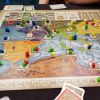
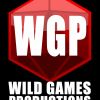
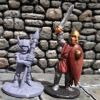
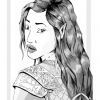



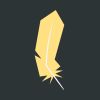

The Wall